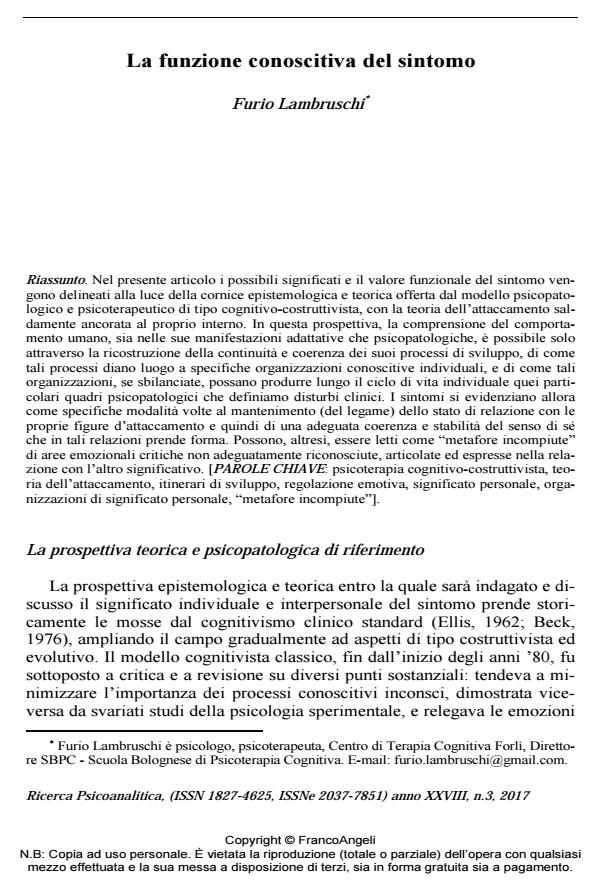The cognitive function of symptoms
Journal title RICERCA PSICOANALITICA
Author/s Furio Lambruschi
Publishing Year 2017 Issue 2017/3
Language Italian Pages 17 P. 37-53 File size 196 KB
DOI 10.3280/RPR2017-003004
DOI is like a bar code for intellectual property: to have more infomation
click here
Below, you can see the article first page
If you want to buy this article in PDF format, you can do it, following the instructions to buy download credits

FrancoAngeli is member of Publishers International Linking Association, Inc (PILA), a not-for-profit association which run the CrossRef service enabling links to and from online scholarly content.
In the present article the possible meanings and functions of symptoms are outlined in the light of the epistemological and theoretical framework provided by the cognitivist-constructivist psychopathological and psychotherapeutic model, including in it the theory of attachment. In this view, we can understand human behavior in its adaptive and pathological manifestations only through the reconstruction of the continuity and consistency of its development processes, of how these processes give rise to specific individual cognitive organizations, and of how such organizations, when skewed, can produce those particular psychopathological situations that we call clinical disorders all along an individual’s life. Symptoms are therefore specific modes required for maintaining (the link) the state of patients’ relationships with attachment figures and therefore an adequate consistency and stability of the sense of self that is formed in these relationships. They can also be seen as "incomplete metaphors" of critical emotional areas that have not been properly recognized, articulated and expressed in the relation to the significant other.
Keywords: Cognitivist-constructivist psychotherapy, theory of attachment, development stages, emotional regulation, personal meaning, organizations of personal meaning, "incomplete metaphors"
Furio Lambruschi, La funzione conoscitiva del sintomo in "RICERCA PSICOANALITICA" 3/2017, pp 37-53, DOI: 10.3280/RPR2017-003004